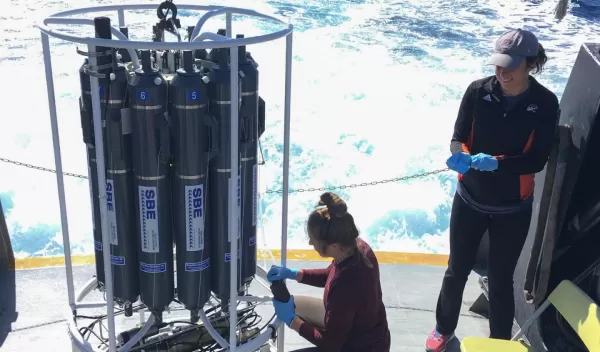
Scientists show 'Red Queen' evolutionary principle at work in microbes in waters off Southern California
In the waves off Southern California, germ warfare occurs in a struggle as old as life itself. That's where University of Southern California marine biologists recently completed a comprehensive new study that shows the tactics bacteria and viruses employ to gain advantages against each other. What they found is that an unlikely standoff occurs, regardless of time, season or location – proof of the evolutionary principle of the "Red Queen."
"The Red Queen concept in biology means a species running fast in place just to keep even, and that's what we found in these microbial communities," said Jed Fuhrman, lead author of the study and a marine biologist at USC.
The microbes are running to stay in the same place, just like the Red Queen in Alice in Wonderland. The NSF-funded research was published in the journal Nature Microbiology.
The battleground for this clash of microscopic organisms is a sliver of the Pacific Ocean between Los Angeles and Catalina Island. The waters are adjacent to some of the most popular beaches in the United States.
The oceans are full of viruses and bacteria, the oldest and most diverse creatures on Earth. Viruses are constantly trying to infect algae and bacteria. At first glance, the fight appears lopsided, because viruses vastly outnumber other marine organisms. A cup of ocean water can hold 1 billion virus particles. Yet, bacteria rely on countermeasures to protect themselves.
The USC scientists sought to explain why the struggle is a stalemate.
Two main findings emerged. The virus communities remained stable. Some 95% of the same virus species were identified in nearly all the samples. The stability persisted over time and location. And within each virus species, there was a constant churning of mutants, each of which dominated the populations for only a few months. This churn allowed the viruses to stay one step ahead of host defenses, which means they need to keep changing to survive.


